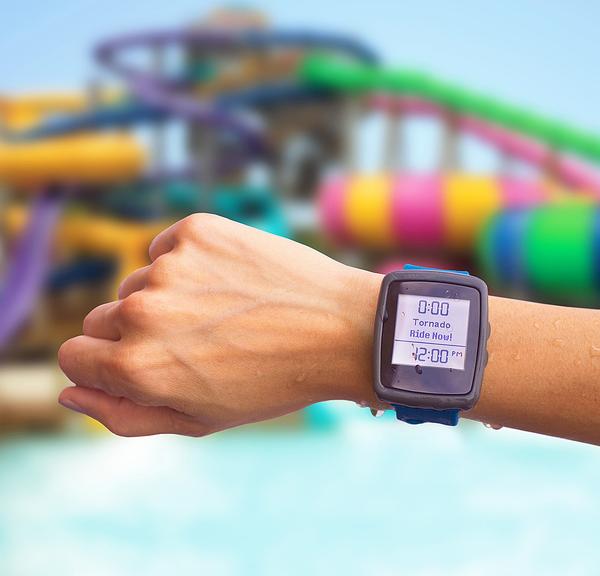



SELECTED
ISSUE
|
|
Leisure Management - Dream Tickets

Ticketing

|
|
| Dream Tickets
|

Ticketing systems are becoming ever more advanced in order to improve the guest experience and the operator’s bottom line. We investigate the sector’s current and upcoming trends
|


The multi-functionality of smart phones is changing the way we enjoy attractions photo: shutterstock/william perugini
|
|
|
|

|
Edwin Hemkes
Chief commercial officer
Syx
This is currently an area of intense focus and where attractions are set to make important gains.
“CRM and big data is hugely important: it’s finding out who’s coming, how often they’re coming and other valuable information that can be used for marketing,” says Edwin Hemkes, chief commercial officer at Syx. “You can’t capture this information so well on the gate, but with more people buying tickets online, it’s the perfect opportunity to find out about them.”
Using data to understand the customer and their behaviour, attractions can create a much more holistic customer experience. The more they entertain and engage the customer, the more the customer is likely to want to come back.
“Information is very powerful when predicting with accuracy what people are likely to do, helping operators to build on their successes,” says Peter Ferguson, head of operations, ticketing and electronic point of sale at the Access Group.
“Something as simple as ensuring you have the right stock, positioned in the right place within the shop can make all the difference to sales. Similarly, with food, it can help to better gauge what to buy and how much to cut down on wastage. Looking at the business in this way helps to cut costs and drive up revenues with repeat visits, and the ability to market and cross-sell to those visitors,” Ferguson says.
"Information is very powerful when predicting with accuracy what people are likely to do, helping operators to build on their successes"
|
|
Peter Ferguson
Head of Operations, Ticketing and Electronic Point of Sale
Access Group
There’s an increasing focus on turning visitors into repeat business with membership and loyalty programmes.
“This is a fundamental change in the business model, but one which stands to deliver greater value,” says Ferguson. “Firstly, it means it’s easier to forecast income over time rather than taking the approach of seeing who turns up on the day. It also means operators are able to develop better relationships with their customers, making the experiences more targeted and relevant.”
“With a membership scheme, operators create predictable revenue streams. If a company wants to sell an attraction, this makes it a more interesting proposition for investors.”
|
|
Simon Kniveton
Director
Vennersys
Mobile sites need to be as accessible as desktop sites since more and more sales are now being made this way. Hemkes says mobile apps are a growing trend, as it makes it very easy for visitors and offers a great reporting tool for managers.
“Taking this one step further, if the ticket is delivered to the mobile device and stored in the Wallet or Passbook, the user doesn’t even have to upload an email, but can use near field communication (NFC) to fast-track through admission points, which translates to fewer staff and an improved visitor experience,” says Simon Kniveton, director at Vennersys.
Vennersys launched Apple Pay support in April, as well as support for the Apple Watch. This next generation of ticket handling allows visitors to wave their watch at the admission point.
Syx is working on systems which use GPS and bluetooth technology to recognise when members come back to the attraction and send them welcome messages, offers and promotions.
|
|
Whether looking at the weather forecast to predict visitor numbers, or looking at sales reports to inform stock buying, cloud-based business intelligence tools are helping attractions tighten up their operations.
“It’s possible to better predict everything, including how much revenue your attraction’s going to make in a given month. You can learn much more about what your customers are buying and what’s not selling,” says Ferguson.
|
|
The Embed Mobile POS (emPOS) solution is being used to reward children at each activity at the Landmark Group’s FunWorks FEC at Yas Mall in Abu Dhabi.
Andrea Bisi, director of international business development for Embed, suggests this could be adapted by other operators, so visitors can gain points for coasters they ride, allowing them to compete against friends, but also working towards a reward. This could work well with a membership or loyalty scheme, Bisi says.
" Gamification means visitors could gain points for coasters they ride, and compete against friends, working towards a reward"
|
|

|
Already popular with airlines and theatres, dynamic pricing has yet to be widely embraced by the attractions sector. However, it’s now starting to gain a foothold.
Particularly relevant for paid-for exhibitions at museums and galleries, those who book early get cheaper tickets and as tickets run low, they rise in price. The price reduces again to fill last-minute slots, allowing museums and galleries to maximise the income of an exhibition.
TJ Christensen, senior vice president business development North America and Europe at Accesso, says this can work for theme parks as well.
“From straight calendar based pricing, to packaging and bundling, many clients are looking for new ways to entice the customer to buy early, as well as shift the price-sensitive buyers off to shoulder or off-peak times,” Christensen says. “When executed correctly, you get a happier guest because they can visit for a price they can afford, and the attraction is happy, because they’ve smoothed out variation in demand.”
|
|
TJ Christensen
Senior Vice President Business Development North America and Europe
Accesso
Not a new concept, but important because not only does a virtual queueing system provide another revenue stream, but spending hours in queues can put visitors off returning. More options are on offer now, such as using smartphones and RFID wristbands.
“By freeing the guests from queue lines, they’re able to enjoy other shows and attractions and spend time in retail and F&B outlets, increasing guest satisfaction and in-park spending,” says Christensen. “It all begins and ends with the guest. We know the simpler the process, the better the guest experience will be, resulting in higher per-cap spending and repeat visits.”
"A potential future use for RFID could be to enhance safety for children, and make sure kids are leaving locations with the proper adult"
|
|
Andrea Bisi
Director of International Business Development
Embed
Radio-frequency identification (RFID) offers convenience for the guest and can encourage more spending as it enables a cashless visit, which works especially well with membership schemes.
A potential future use for RFID, or disposable wristbands, could be for enhanced safety for children, says Bisi.
With the use of specific “guest check” features, we can make sure kids are leaving the locations with the proper adult, he says.
| |


|

Accesso’s Qband has RFID capabilities that support cashless payments and locker rentals |
|
|
With so much customer information being stored in systems, security has never been more important. The recent story of hackers who managed to jump to the front of the queue for Burning Man tickets emphasises how hackers will be quick to take advantage of any loopholes.
Ferguson says there are a number of basic steps operators can take to guard against attacks, such as keeping website software up-to-date, making sure new patches are applied, acting on third-party vendor mailings regarding security issues, using generic login error messages and ensuring complex passwords are used.
“But above all else, put websites and applications through their paces to test for all possible ways that someone might try to compromise the system,” he says.
| |


|
| photo: FLICKR/ Gwen Schroeder |

Recent news reports said software engineers hacked into the Burning Man’s Ticketfly ticketing system to cut to the front of the queue |
|
|
 |

REAL-TIME MULTI-CHANNEL DISTRIBUTION |
 |
Real-Time Multi-Channel distribution is tipped to become more significant as this helps operators to maximise income.
“Managing distribution of tickets through multiple channels at the same time, and clearing/reconciling accounts with partners has always been complicated and time-consuming and reduced the opportunity to sell,” says Bisi. “With a real-time solution, every sales channel is always up-to-date: there’s no double booking, no ticket wasted and immediate calculation of partners’ commission.”
|
|
David Hancock
Director
Langdale Attractions Solutions
Social media creates immense potential to gain better insight into audiences, according to David Hancock, director at Langdale Attractions Solutions.
“Social media offers us the ability to identify key trends and similarities from each guest,” he says. “This allows the attraction to target a like-minded demographic based on interests, age groups, locations and relationships. Tapping into this information for the attractions market is still in its infancy, but this will play a vital role going forward.”
|
|
 |
| Originally published in Attractions Management 2015 issue 2
|
|
 |
|